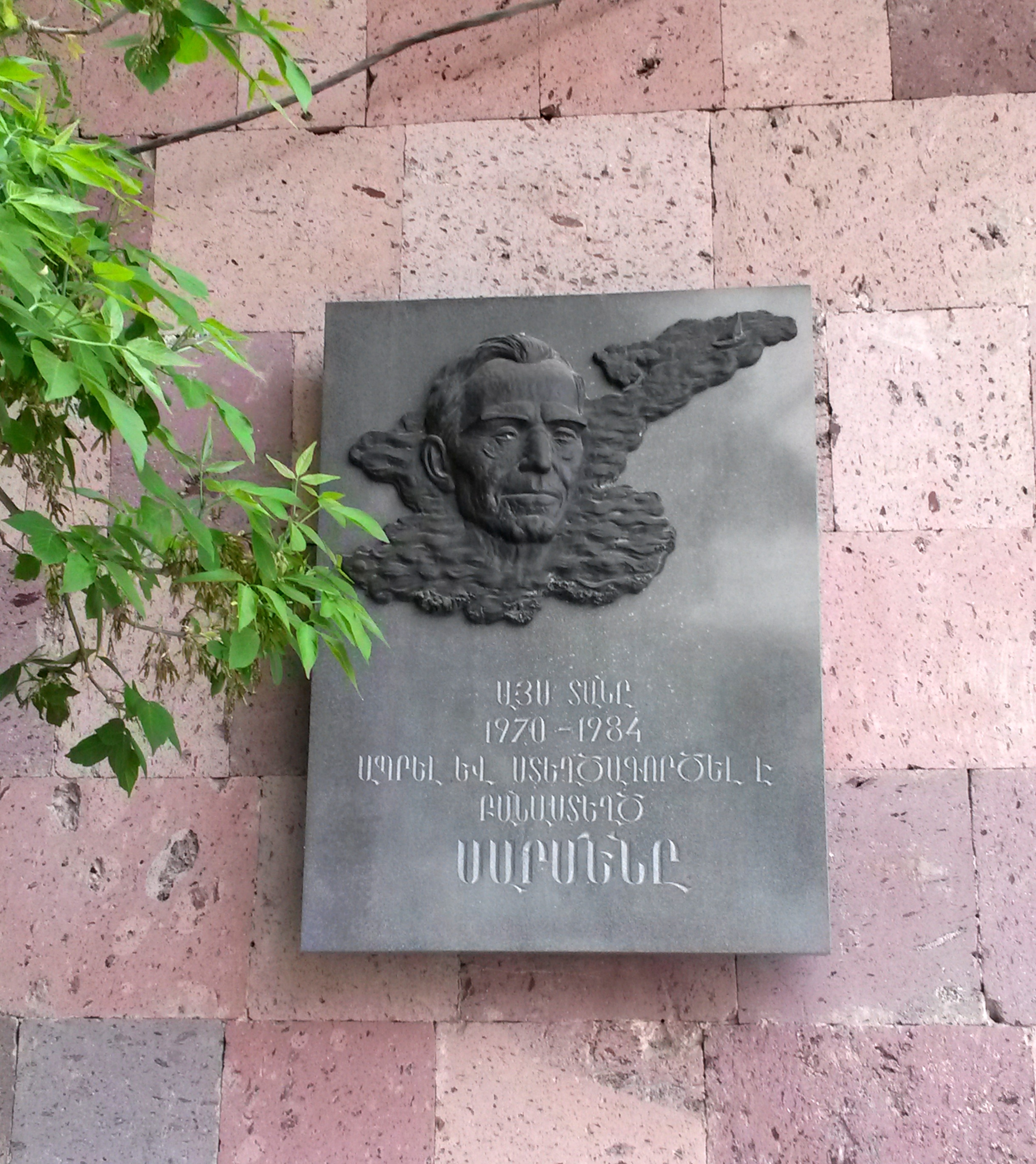|
Anthem Of The Armenian Soviet Socialist Republic
The State Anthem of the Armenian SSR ( hy, Հայկական ՍՍՀ օրհներգ, translit=Hajkakan SSH orhnerg) was the national anthem of Armenia when it was a republic of the Soviet Union and known as the Armenian Soviet Socialist Republic. It was used between 1944 and 1991. Its music was composed by Armenian composer Aram Khachaturian, and the lyrics were written by Sarmen. Along with the Anthem of the Estonian SSR, it is one of the only two SSR anthems without an intro. Upon independence from the Soviet Union in 1991, Armenia adopted the anthem "Mer Hayrenik" in its place, though there has been occasional debate about restoring the music of the anthem of the Armenian SSR with different lyrics as the national anthem. Lyrics 1956–1991 Version 1944–1956 Version Restoration attempts The anthem has always maintained simultaneous public support and displeasure in Armenia, and there have been attempts to restore the anthem's melody with new lyrics as the national ... [...More Info...] [...Related Items...] OR: [Wikipedia] [Google] [Baidu] |
Sarmen
Sarmen ( hy, Սարմեն), pseudonym of Armenak Sarkisyan ( hy, Արմենակ Սարգսյան; born in Pahvants village, Western Armenia, died February 18, 1984 in Yerevan) was a Soviet Armenian poet. He wrote the lyrics to the Anthem of the Armenian Soviet Socialist Republic which remained in use from 1944 to 1991 in the Armenian SSR The Armenian Soviet Socialist Republic,; russian: Армянская Советская Социалистическая Республика, translit=Armyanskaya Sovetskaya Sotsialisticheskaya Respublika) also commonly referred to as Soviet A .... Armenians from the Ottoman Empire 20th-century Armenian poets 1901 births 1984 deaths Armenian male poets 20th-century male writers Emigrants from the Ottoman Empire to the Russian Empire {{armenia-poet-stub ... [...More Info...] [...Related Items...] OR: [Wikipedia] [Google] [Baidu] |
Emblem Of The Armenian Soviet Socialist Republic
The emblem of the Armenian SSR was devised from an initial prototype sketch by Martiros Saryan, a famous Armenian painter, and was adopted in 1937 by the government of the Armenian SSR. Overview The emblem prominently features Mount Ararat, regarded as the national symbol of Armenia. The white grapes shown immediately beneath Ararat represent the traditional Biblical account of the first vineyard that Noah planted upon his descent from his ark as a sign of rebirth of humanity. The inner rim on the sides of the grapes includes wheat, symbolic of the land and natural resources of Armenia. Above Mount Ararat is the hammer and sickle with the red star behind it. Printed on the outer rim are the words "Armenian Soviet Socialist Republic" in Armenian (Հայկական Սովետական Սոցիալիստական Հանրապետություն ''Haykakan Sovetakan Sots’ialistakan Hanrapetut’yun'') while in the center outer rim is the motto "Workers of the world, unite!" in both Ar ... [...More Info...] [...Related Items...] OR: [Wikipedia] [Google] [Baidu] |
Zori Balayan
Zori (), also rendered as zōri ( ja, , ), are thonged Japanese sandals made of rice straw, cloth, lacquered wood, leather, rubber, or—most commonly and informally—synthetic materials. They are a slip-on descendant of the tied-on sandal. Similar in form, modern flip-flops became popular in the United States, Australia and New Zealand when soldiers returning from World War II brought Japanese zori with them. Use Like many Japanese sandals, zori are easily slipped on and off, which is important in Japan, where shoes are removed and put back on when entering and leaving a house, and where tying shoelaces would be impractical when wearing traditional clothing. The traditional forms of zori are seen when worn with other traditional clothing. Modern forms are fairly common, however, with casual Western wear, especially in summer. While geta are now mostly worn with the informal , traditional zori are often worn with the more formal kimono. In rain, zori may be worn with toe c ... [...More Info...] [...Related Items...] OR: [Wikipedia] [Google] [Baidu] |
Levon Ananyan
, image = Levon Ananyan.jpg , image_size = , alt = , caption = Levon Ananyan, Yerevan, 2010 , birth_name = , birth_date = , birth_place = Koghb, Tavush, Armenia , death_date = , death_place = Yerevan , death_cause = , occupation = journalist and translator , nationality = Armenian , years_active = , alma_mater = , partner = , children = , known_for = President of Writers Union of Armenia Levon Ananyan ( hy, Լևոն Զաքարի Անանյան; 13 October 1946 – 2 September 2013) was an Armenian journalist and translator. Biography Born in Koghb, Tavush, Levon Ananyan was a graduate of the Yerevan State University, Department of Philology. He worked for a number of state journals. Fo ... [...More Info...] [...Related Items...] OR: [Wikipedia] [Google] [Baidu] |
Sos Sargsyan
Sos Sargsyan ( hy, Սոս Սարգսյան; 24 October 1929 – 26 September 2013) was a prominent Armenian actor, director and writer. Biography Sos Sargsyan was born in Stepanavan in northern Armenia, at the time part of the Soviet Union. He moved to Yerevan in 1948 and started to perform at the Theater of the Young Spectator. He graduated from the Fine Arts and Theater Institute in 1954 as an actor. Between 1954 and 1991 he performed at the Sundukyan State Academic Theatre of Yerevan. In October 1991, a month after Armenia's independence from the Soviet Union, Sargsyan took part in the first presidential election in independent Armenia. He was nominated by the Armenian Revolutionary Federation. In 1991 he established the Hamazgayin (Pan-National) Theater, which he headed until his death. From 1997 to 2006 he was the rector of the Yerevan Cinema and Theatre Institute. Sargsyan died on 26 September 2013 in Yerevan. Sargsyan's funeral was held on 29 September in attendance of ... [...More Info...] [...Related Items...] OR: [Wikipedia] [Google] [Baidu] |

.jpg)
